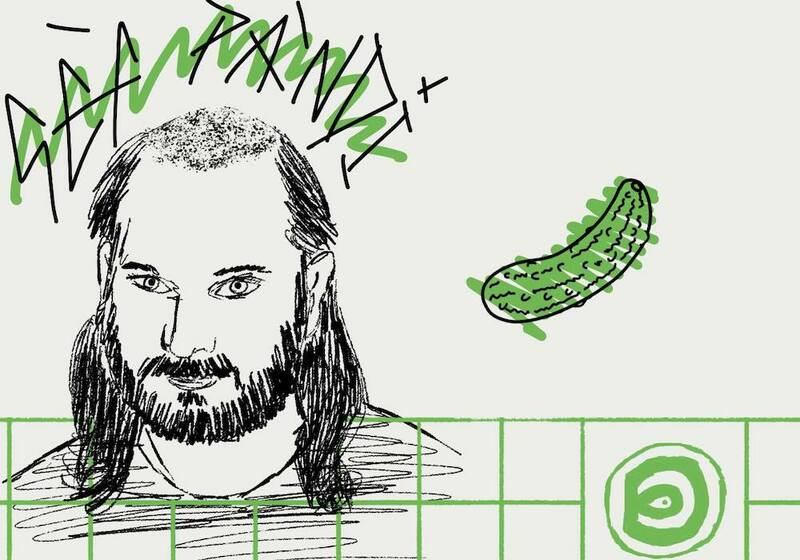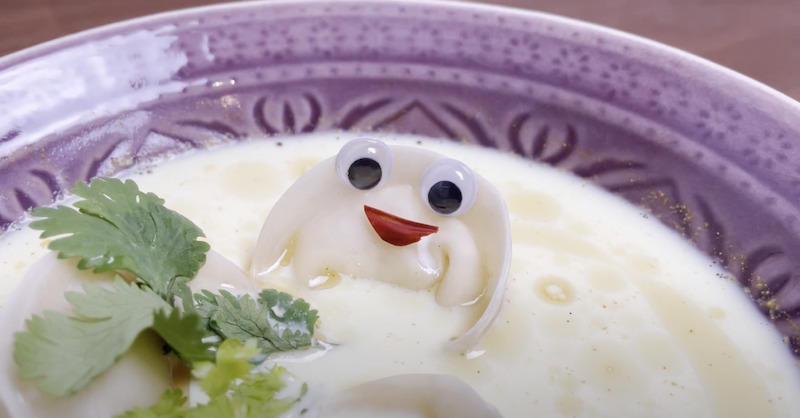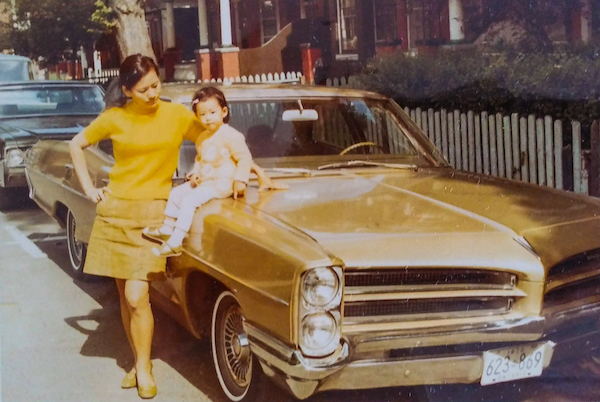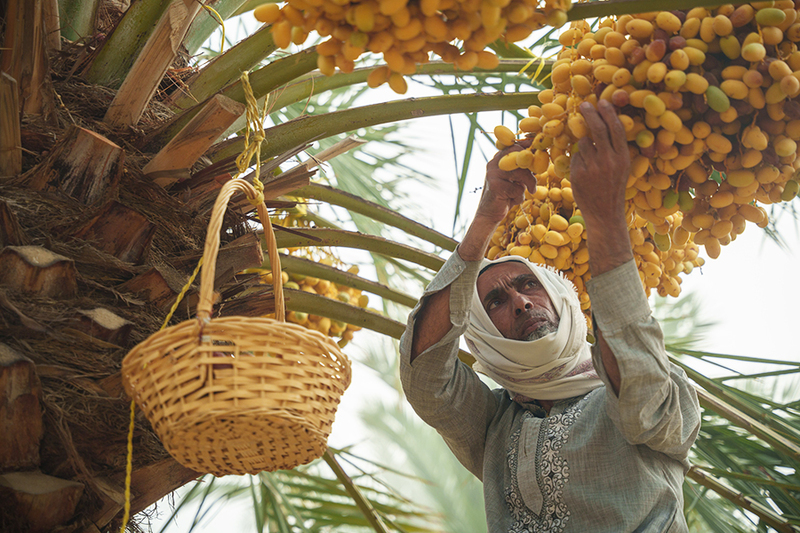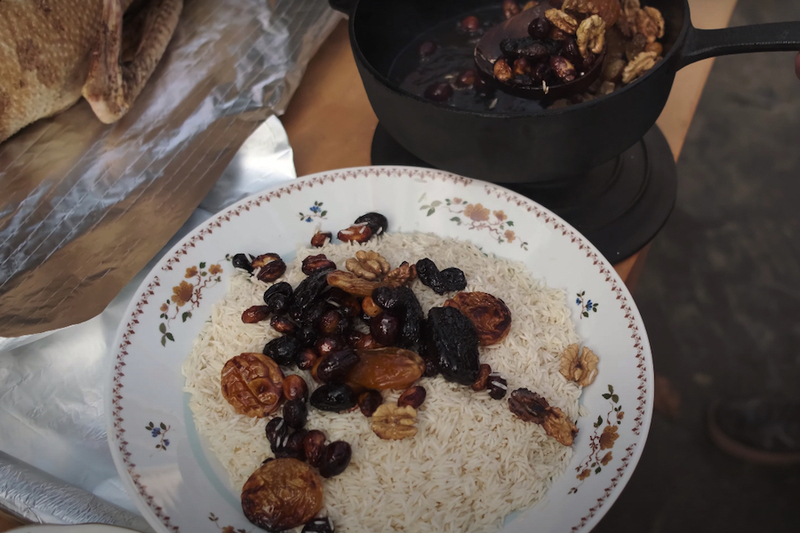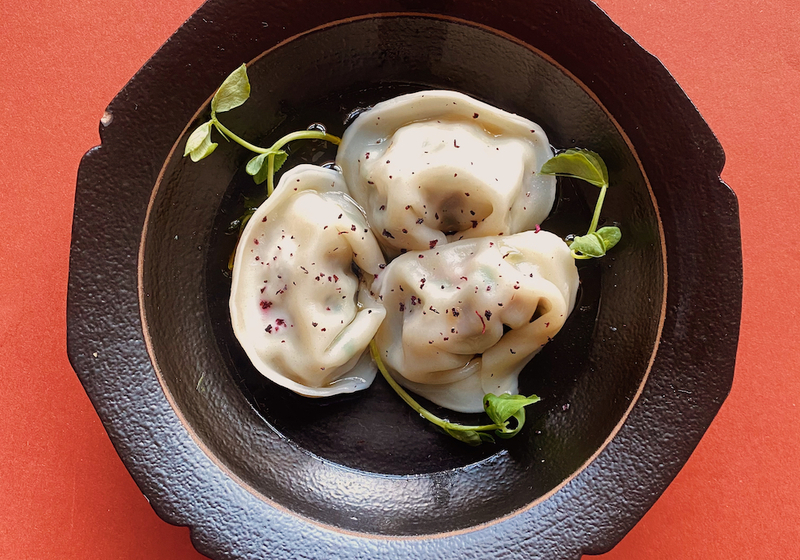
All images courtesy of Bermet Borubaeva
Political scientist, artist, and eco-socialist Bermet Borubaeva discusses her activist project Still Life, placing it in the history of relevant art. In many ways, following artistic practices of the aesthetics of interaction, Still Life uses unsaleable food products for a dialogue on social problems and for making highly saleable dishes. A recipe is attached.
I first began thinking about biopolitics after watching the film Wastecooking: Make Food, Not Waste (Austria, 2015, directed by Georg Misch). The main character of the film, the Austrian activist David Gross, tells us that a third of all food is thrown away. While collecting harvests, in during sale and after purchase people throw away tons of products and prepared meals. This was a revelation for me: the global system of food production was revealed, which is built exclusively on making profits without taking into account ecological risks and humanitarian needs. During the film screening, the ayurvedic chef Svetlana Khakimova prepared a meal from leftovers: some brought by organizers and viewers, and some found at the market. Inspired by the screening, together with fellow-thinkers in Bishkek I launched an initiative to save food, #FoodsharinginBishkek: now every day volunteers take unsold sweets from cafés to a center for the homeless and to large families. In half a year, over half a ton of food is saved.
When I moved from Bishkek to Moscow, I decided to conduct an experiment: to spend a month with unsaleable groceries (but which were actually fit for consumption), which for various reasons are thrown away by manufacturers, supermarkets, catering establishments, and even friends. I was afraid that I would go hungry, but I ended up with more food than I had expected: my neighbors shared leftovers from meals, friends gave me their grandmother’s harvest from the vegetable garden. Through the social network group “Food for Free” I was given apples from the dacha, vegetables from a garden in the Moscow region, and Arabian bread from a vegan café. In the evenings at the Preobrazhensky Market I could take a pile of vegetables and fruit for free or for practically nothing, food which no one would buy the next day. The experiment with unsaleable groceries broadened my understanding of the problem of overproduction. The results of the projects were not shown in the sterile space of a gallery, but published in the media: first on the portal “Zdravkom,” where I kept a weekly diary about the experiment, and then in the newspaper Trud (“Labor”), which has millions of subscribers.
The mechanism of the modern system of food production and consumption shows us how our society is organized. Using social research and artistic tools, I discuss the sometimes-invisible links between food and politics, and make my own micro-interventions in the existing system of biopolitical relations. But how and why did the food and catering industry, the need for food and the feeding process itself become the subject of an artistic gesture in contemporary art?
The environment Eat by Allan Kaprow, the originator of happenings, was presented in abandoned beer cellars in the Bronx in 1964. Not more than twenty people could view the exhibition over an hour. Viewers entered a cellar and walked through corridors to reach the installation. The stone walls were painted white, there was a sound of dripping water and a smell of rot. A male voice repeated “Get ‘em! Get ‘em!” Apples were hanging on ropes from the ceiling. Two women stood silently on podiums holding bottles of red and white wine. Another woman fried bananas fritters on an electric stove in the back. A ladder led to the second level where there was a table with sliced bread, strawberry jam and a few table knives. The performers did not offer the visitors anything and hardly moved. The visitors had no instructions. The only people who got any food were those who for it, or who took it themselves. Here Kaprow created an artistic situation with a specific atmosphere—a game situation in which viewers had to work things out on their own. This project, which was highly expressive, nevertheless lacked any socio-political subtext.
The social revolution in art which Joseph Beuys had already predicted in the 1970s took place in the early 1990s with the arrival of participatory art, so-called relational aesthetics or aesthetics of interaction. The Thai artist Rirkrit Tiravanija studied the theme of social alienation through a shared meal. In the project pad thai, shown in 1990 at the Paula Allen Gallery in New York, he prepared Thai noodles and fed them to visitors of the exhibition with. Tiravanija presented a similar project at the Carnegie Museum of Art in 1995, placing the text of a recipe for a Southeast Asian green curry on the wall: in the exhibition hall the artist prepared this dish for visitors. One of the most spectacular projects by Tiravanija, Untitled (1271) was shown at the Venice Biennale in 1993. The name referred to the year when the Italian traveler Marco Polo returned from his Asian journey to his native Venice and brought numerous exotic things with him. One of them was Chinese noodles, which the Italians soon made their own national dish. Tiravanija paddled around the canals of Venice an aluminum canoe with two pots of boiling water and several packets of instant noodles, which he gave to viewers.
The theoretical aspects of these projects are discussed by Nicolas Bourriaud in the book Relational Aesthetics, where the French critic and curator states that involving the viewer in aesthetic practices forms the basis of contemporary art. A meal was historically a collective activity. The increase of atomization, globalization and alienation in modern cities turns eating food together into a radical artistic gesture. If in the 1960s–1970s Alan Kaprow studied the boundaries of art and new methods for experiencing it, in the 1990s, in the works of such artists as Rirkrit Tiravanija, art became a space for communication. The arrangement of roles remains conventional: the artist sets certain conditions—devises a concept, finds a space, prepares food and receives the entire symbolic capital, and the viewer only takes part in the meal.
In the project Time/Food, shown at the Stella Art Foundation in Moscow in 2004, artists Julieta Aranda and Anton Vidokle tried to create an alternative system to money. Instead of currency, the artist used time: a person could “buy” a meal for thirty minutes of their time. One could choose notes on the wall that contained suggestions for ways of spending time: to walk the dog, look after a child, sort out the library, discuss problems. Using the example of food, viewers were invited to think about what time means. Is time money, or is time food? The artists refer to the economics of natural exchange, bypassing capitalist credit and monetary relations, but at the same time create them once more.
Time/Food may be contrasted with another project which was created ten years later by the artist and activist Pavel Mitenko in 2014. His Open Kitchen at the MediaUdar festival in Moscow was equipped like an ordinary kitchen, where everyone could come along and prepare something to eat. The simplest ingredients were provided. Mitenko created an absolutely free public space, oriented towards people’s needs, thus casting doubt on the monopoly of the food service industry in the capitalist system.
Today, interdisciplinary curator projects are becoming relevant in gardening, agriculture, economy, agropolitics, biology, and modern art. The process of growing vegetables in the exhibition space becomes a work of art, and preparing dishes from leftovers becomes a performance. We may recall Barter Café and Flying Cooperation (27 November 2015, Moscow), the city gardens of the collective “AND… AND… AND” at documenta 13 (2012, Kassel), the meal made of leftovers by the “Donate to Curate” group at Manifesta 11 (2016, Zurich), and others. The American researcher Allison Carruth examines such projects in the article “The Green Avant-Garde: Food Hackers and Cyberagrarians.”

The continuation of my social experiments with unsaleable products was the experimental artistic project Still Life, which together with the curator Anna Fatyanova and with support by Ivan Isaev, I organized at an exhibition space Dreiviertel in Bern in 2019. At the gallery, we created an improvised café with the name “Still Life.” In the small exhibition space, we placed a bar, tables, and chairs. We served a main course and deserts using the products we were able to obtain. The ingredients included “second-day bread,” enormous zucchinis which no one in Switzerland buys because of their unusual appearance, and wild apples. We managed to prepare incredibly delicious meals from these ingredients: marrow dumplings and pilaf, pizza, apple pie, carrot cake (recipe attached), chocolate cheesecake on a yoghurt base on a crust of reground bread, tarts baked from stale bread, topped with wild blackberries gathered in a nearby forest. The highlight of the program was chocolate truffles made from goat’s cheese which had almost passed its expiry date.
We made a meal every evening for a whole week. The guests were delighted, and did not immediately realize that we had prepared everything with ingredients that are usually just thrown away. Our café became a place where people came to socialize. On the shelves, like in a plasticine museum, we placed vegetables of various unusual shapes which people do not buy at supermarkets because they do not conform to accepted “beauty standards.”
The Still Life project proceeds from the concept of the aesthetics of interaction and appeals to activist forms of art, where the infrastructure—galleries and museums—is used to reveal social problems through the process of preparing food, which becomes a medium in its own right. Nowadays, it is no longer sufficient just to “feed” the visitors of an exhibition. It is important to show an alternative development of customary processes and to start contemplating them together.
Carrot cake of breadcrumbs or stale bread
Bread is thrown away more often than other products, although it can always be dried out and used for baking. We decided to bake a delicious carrot cake, and we’re sure that the recipe could be used by city cafés and even bakeries.
Mix all the ingredients together, put in a baking dish and bake for 1 hour at 160 °С.

Translated from Russian by Simon Patterson
